Briana wrote looking for help with a Native American Stick Song. You can read her letter and hear the song in the YouTube below…
"Hello! My name is Briana. I was actually wondering if you would by chance be able to help me identify this song. My sister and I learned it in Elementary school and would love to relearn it now in our 20’s. We’re in New York. I believe it’s a Native American song. I would guess Iroquois but I’m not positive. I included a link to YouTube (below) of a class singing it, which helps because I can’t make out the words, just the rhythm.
Any help at all would be awesome! Thank you for taking a minute to read this!"
If anyone knows where this song is from, or if you can provide the lyrics or translation, please let us know in the comments below or email me.
Thanks!
Mama Lisa
This article was posted on Monday, February 8th, 2016 at 7:18 pm and is filed under Countries & Cultures, Games Around the World, Native American Indian, Questions, Stick Games. You can follow any responses to this entry through the RSS 2.0 feed. You can skip to the end and leave a response. Pinging is currently not allowed.








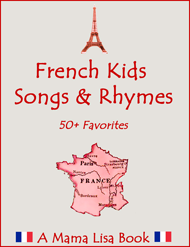
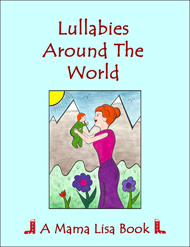


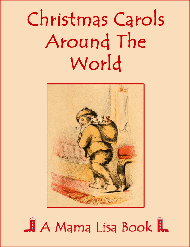
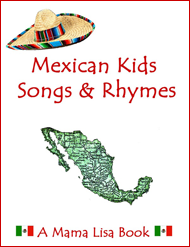



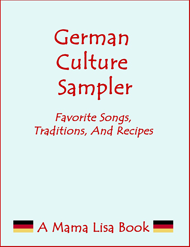







October 29th, 2017 at 5:04 pm
Hello, Briana!
I am a music teacher in northern Kentucky and the song comes from the 3rd Grade Music and You textbook series put out by Macmillan/McGraw-Hill publishers. The series credits the song to a “Northwest Coast Native American Game.” It doesn’t specify the exact Native American tribe. The words go:
Ma koo-ay Ko tay-o Ay-koo-ee tah-nah
Ma koo-ay Ko tay-o Ay-koo-ee tah-nah (repeat as needed)
There is no translation in the Teacher textbook.
The stick game that accompanies the song goes like this:
Sit facing a partner, both of you with two sticks. (I typically use different colored sticks in each hand: Red in the Right hand, Blue in the Left hand. It makes it easier for younger students who are still struggling telling their right from their left, especially since they have to cross over.)
Beats in the song are in sets of three so the pattern goes
1) Both sticks tap ground or floor.
2) Both sticks tapped together.
3) Right hand stick to partner’s Right hand stick. (In my case, Red to Red)
1) Both sticks tap to ground or floor.
2) Both sticks tapped together.
3) Left hand stick to partner’s Left hand stick. (In my case, Blue to Blue)
REPEAT pattern till end of the song.
Hope this helps!
Tim
October 29th, 2017 at 5:09 pm
Thanks for the info Tim!
March 6th, 2019 at 2:58 pm
I have the words and music on paper to this song. My dad made wooden sticks for us to use that we played with as kids
July 2nd, 2019 at 2:01 am
I learned it in camp, but seated crosslegged in front of a partner. Now…..if someone has the translation……
July 20th, 2019 at 10:02 pm
I learned this while doing missionary service on the island of Roatan, Honduras in 1982. The children taught this to us. I remember the tune & words were sketchy until my post was answered by the blogger. Another comment describes the accompanying Lummi sticks rhythm. Thanks so much for responding
August 19th, 2019 at 8:17 pm
These are called Lummi Sticks and are from the Lummi Native Tribe.
Working on finding the translation myself. 💗
August 26th, 2019 at 5:52 pm
Ali wrote,
Oh my gosh I learned this song at Moose Hill led by Mr. Buzzawitz an old naturalist and director of the Camp in Sharon, Ma. in 1963?
He taught us how strip maple branches, sand them and paint them to click your partner’s stick while singing the song it made a beautiful sound. I believe he said the song originated from local tribes in our area. I’ve been singing this since 3rd grade but unfortunately don’t know the meaning. Sing these words to the tune the kids are singing.
Here goes:
WAH KOOWAH KOTAYA. WHA KOOWIE TANA
WHA KOOWAH KOTAYA, WHA KOOWIE TANA
Than the song goes higher for a couple of choruses than down again.
My best to you,
Ali
August 26th, 2019 at 6:05 pm
This is a line from a Maori stick song called E papä Waiari. The Maori line is “Mäku e kaute öhïkoitanga”.
You can learn the full song on our New Zealand pages (click link above for the song).
March 16th, 2020 at 1:35 am
As I now approach my 60th birthday in april, I still remember performing this song in our elementary school gym… and forever remembered the lyrics… now being taught to my 10 grandchildren.
June 6th, 2020 at 7:32 pm
In Girl Scout Day Camp, I learned it as “Ma kooi ko tayo ma kooi tawa”. My bff & I got it down to awesome perfection, as we would play it on our lunch breaks in Jr. High. One time we were playing it so well, and so fast, that we drew a large crowd around us! They applauded when we were done! I miss those days. Sadly, I lost my bestie a year and a half ago. (Oh, and we called them Limmy sticks. No wonder I had trouble finding info. about them!)
August 27th, 2020 at 7:47 pm
Debbie Roe wrote:
“My twin sister and I when we were with the Girl Scouts made lummi sticks And the song we learned to go with it – so this is nowhere near the spelling was ‘Mo Ki yo Ka Tao on Conway Tonya’.”
December 20th, 2020 at 12:43 am
I was in Girl Scouts from 1948 through 1959. We called these Lemme Sticks. The song words were (phonetically): Mah Koo Ay Koh Tah O Ay Koo Ee Tah Nah. The game comes from the Maori people, not from Native American people. You can find videos of Maoris playing it on the internet.
We played it as partners. The movement of the sticks gets progressively more difficult. Sometimes it became an elimination game – if a pair of players dropped a stick they were “out”. The pair that lasted the longest were the winners.
February 12th, 2021 at 6:04 pm
These two songs (Maku e and E papa waiari) are two different songs with two different melodies. The second song is definitely well known in New Zealand as a Maori traditional titi toria song. Maku e has appeared in multiple publications as North American indigenous, which it certainly is not. It has the sound and feel of a Maori song, but I have not been able to verify the origin. The first version I came across many years ago was in a book by Millie Burnett, named “Ma kai ai.”
February 14th, 2021 at 12:10 am
Thank you for this information. I learned this song in 3rd grade sometime around1963. My father made sticks for me out of an old broom handle. I’ll never forget the tune and all the love my teacher had for us. What a memory!
April 28th, 2021 at 2:51 pm
https://folksong.org.nz/epapa/index.html#Trad has lots of great information about this and other related stick games.
April 30th, 2021 at 12:40 am
Thanks for all of this great information! I am really hoping to use this game in my music classroom this fall, and am grateful for the extensive notes and resources in this site. Much appreciation to Mama Lisa!!
August 4th, 2021 at 5:32 pm
I played this in Girl Scouts too, but we learned it from a family friend who came from the Philippines. She also taught us Tinikling [a Filipino folk dance with Bamboo poles] once we were good enough at lummi sticks not to bash each other’s knuckles. We had a sister troop that sent us a record of the music.
August 5th, 2021 at 11:10 pm
I learned this song when I was in girl scouts back in the late 1950’s. My sister and I would practice using sticks made by my dad out of broom handles. I remember that the stick movements got progressively harder and we tossed each other the sticks at one point, catching them vertically. We also flipped them up and caught the opposite side. So fun. I wish I could remember it from start to finish with all the gestures with the sticks.
November 16th, 2021 at 8:42 pm
It must have been in 1975 or so that Mr. Bill Morgan at Skyline North Elementary School taught us this song and the stick game in the third grade. However, Mr. Morgan belonged to the LDS church and I seem to remember he learned it on his missionary work in Africa. It was a long time ago so I am probably mistaken.
January 30th, 2023 at 3:37 am
I was beginning to think I dreamt this whole Lummi sticks and song up. Thank you so much for posting!!!!
February 2nd, 2023 at 2:01 pm
Oh my goodness! This morning I was watching a segment on Good Morning America and Robin Roberts is in New Zealand featuring the Maori culture. One performance showed these sticks and so I looked it up on Siri. It brought back memories of my Girl Scout camping days in the 1950s. We learned a game seated on the ground with sticks in the song. They were Lemme sticks and the words to the songs were the same as what I am reading in all the responses above. We would have competitions, and as one person already wrote, the faster you played and flipped the sticks, the harder it was and yes, some people would be eliminated and finally there’d be a winning duo. What a wonderful time it was, but I never knew what the origin was either, and from what I am seeing it very possibly could be from the Maori culture, but it could be from Native Americans. Awesome. I personally don’t know the origin. These memories were wonderful of my childhood and of Girl Scout camp. I still have my broomstick Lemmy sticks in a trunk under my bed. I think I will teach them to my grandchildren.
May 7th, 2023 at 11:47 pm
I remember more to the song if this sounds familiar
You first verse as listed above, but also
Aye yi yi Kippy Aye Kayanna
Aye yi yi Kippy aye Kayanna
Do— I Kemmie Kitchie
Do— I Kemmie Kitchie
Start over with verse above—- But I think there is another verse. If that shakes a memory, please include me in your response…
November 7th, 2023 at 9:12 pm
Susan B. wrote, “We did lummi sticks at a children’s camp in northern Michigan back in the late 60’s and well into the 70’s. This is my attempt at a phonetic spelling of the song:
‘Ma kooway ko tay oh way kooie taan yah.’ (Repeat)
Hope that helps!”
February 23rd, 2024 at 4:32 pm
Although this is a much older thread, I thought I would share this link which contains the true history and origin of the game as well as the translation of the lyrics.
Enjoy!
https://www.folksong.org.nz/epapa/
May 27th, 2024 at 9:08 pm
What a treat it was for me to discover this site! I was a Camp Fire girl in the 50’s, (we had no Girl Scout program then), and learned about “leemee” sticks at camp. I never saw any words written, so everything was phonetic: Mah ko, wake-oh, tie-oh-way, koe-ee tahn ya, koe-ee-tahn yah. Yes, it was a three beat rhythm and I remember the tune to this day. I want my granddaughters to enjoy the tradition, and now I have something to go on!
Thanks for the information, despite the variety of spelling and origins!
July 22nd, 2024 at 11:08 pm
I learned this in Cub Scouts back in the 1950s. I was told it was Hawaiian. Never did get a translation. The words I remember are:
Ma koo ee ko tay yah way koo-ee tan-yah